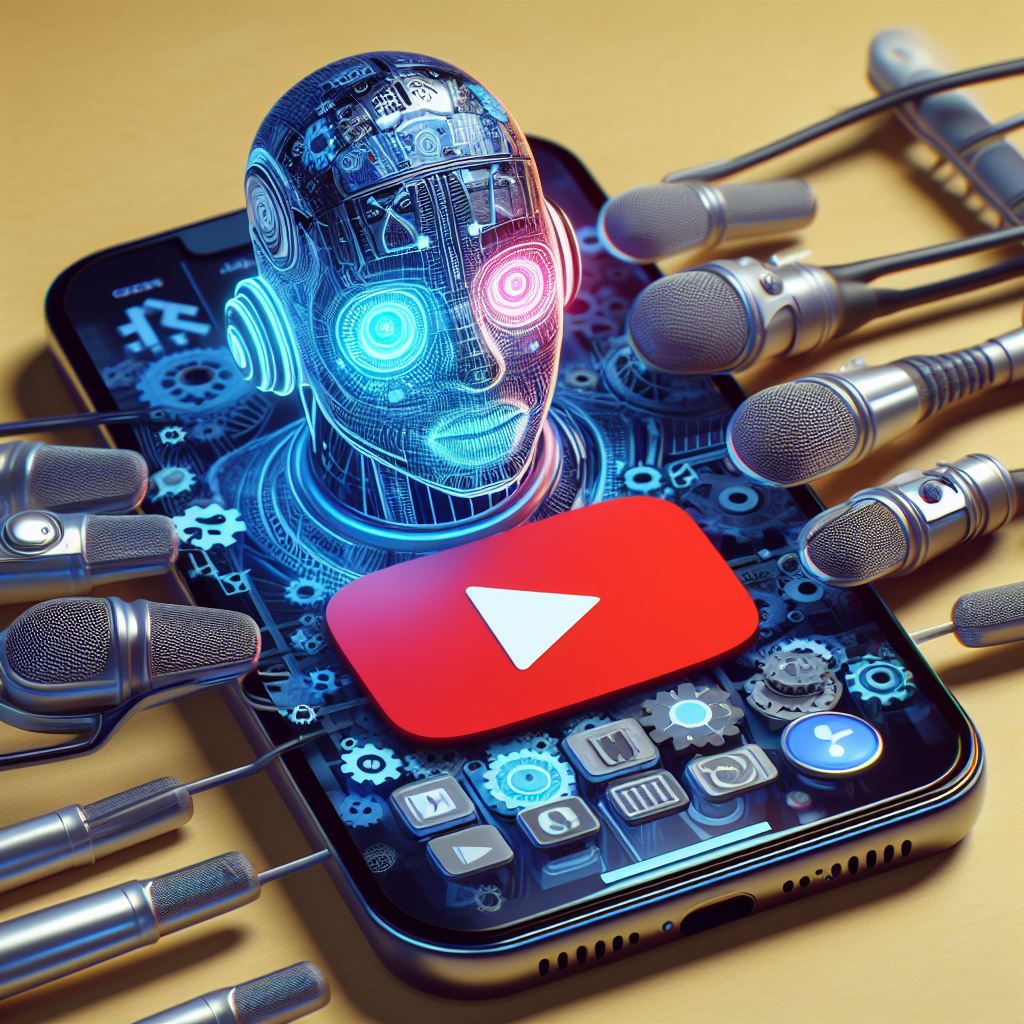Introduction
YouTube’s Aloud is the world’s largest video-sharing platform, with over 2 billion monthly active users and more than 500 hours of video uploaded every minute. YouTube’s mission is to give everyone a voice and show them the world, but there is a major challenge: language barriers. According to YouTube, more than 60% of its watch time comes from outside the creator’s home country, and only 20% of its users speak English. How can YouTube help creators reach a global audience and make their content accessible to viewers who don’t speak their language?
The answer is YouTube’s Aloud new AI-powered dubbing tool that uses artificial intelligence to automatically translate and dub videos into other languages. Aloud is a game-changer for multilingual content creation, as it enables creators to effortlessly dub their videos with high-quality and natural-sounding voices, without having to hire a human translator or spend hours on video editing. Aloud is still in the early stages of development, but it has already been tested with hundreds of creators and received positive feedback. In this article, we will explore how YouTube’s Aloud works, what are its benefits and challenges, and what are the implications for the future of work and careers with AI tools.
How YouTube’s Aloud Works
Aloud is a product of Area 120, Google’s in-house incubator for experimental projects. Aloud harnesses cutting-edge advancements in audio separation, machine translation, and speech synthesis to streamline the dubbing process. Here are the main steps involved in using YouTube’s Aloud:
- The creator uploads their video to YouTube and selects the target languages they want to dub their video into. Aloud supports over 100 languages and dialects, including English, Spanish, French, German, Chinese, Hindi, Arabic, and more.
- YouTube’s Aloud analyzes the video and separates the original audio from the background noise and music. Aloud then transcribes the audio into text and translates it into the target languages using Google’s neural machine translation system, powered by deep learning and can handle complex and idiomatic expressions.
- YouTube’s Aloud generates synthetic voices for each target language using Google’s text-to-speech technology, which is also based on deep learning and can produce natural and expressive speech. Aloud matches the voice characteristics, such as gender, age, and tone, of the original speaker as closely as possible. Aloud also adjusts the timing and intonation of the speech to match the lip movements and emotions of the speaker on the screen.
- YouTube’s Aloud merges the synthetic voices with the original video and adds subtitles in the target languages. Aloud also provides the creator with a preview of the dubbed video and allows them to edit the translation, voice, and subtitles if needed. The creator can then publish the dubbed video on YouTube and share it with their audience.
The Benefits of Aloud
Aloud is a revolutionary tool that offers many benefits for both creators and viewers. Here are some of the main advantages of using Aloud:
- It makes it easier for creators to reach a global audience. By dubbing their videos into multiple languages, creators can tap into previously untapped portions of the global population and increase their views, subscribers, and revenue. Aloud also helps creators to overcome the language barrier and connect with viewers from different cultures and backgrounds.
- It saves creators time and money. Aloud eliminates the need for manual translation, video editing, and audio production, which can be time-consuming and costly. Aloud can dub a video in minutes, with minimal effort from the creator. Aloud also reduces the storage and bandwidth costs of uploading multiple versions of the same video in different languages.
- It improves the quality of dubs. Aloud produces high-quality dubs that are indistinguishable from human-made dubs. Aloud’s synthetic voices are natural and realistic and can convey the emotions and nuances of the original speaker. Aloud’s translations are accurate and fluent and can handle complex and idiomatic expressions. Aloud’s dubs are also synchronized with the video and do not cause any lip sync or audio-visual mismatch issues.
- It enhances the viewing experience. Aloud allows viewers to enjoy the content in their preferred language, without having to rely on subtitles or captions, which can be distracting or inaccurate. Aloud also preserves the original voice and personality of the creator, which can help viewers to relate to them and engage with them. Aloud also gives viewers the option to switch between languages, subtitles, and original audio, depending on their preference.
The Challenges of Aloud
Aloud is a groundbreaking tool, but it is not without its challenges and limitations. Here are some of the main difficulties and drawbacks of using Aloud:
- It requires transparency and consent. Aloud requires creators to provide clear indications in the video description, pinned comments, or post-credit screens that the dubs are synthetic, with a reference to the original. This is to ensure that viewers are fully informed and do not feel deceived or misled by the use of AI. Aloud also requires creators to obtain the consent of the original speaker before dubbing their video, especially if the speaker is a third party or a guest. This is to respect the speaker’s rights and preferences and avoid legal or ethical issues.
- It faces technical and linguistic challenges. Aloud is still in the early stages of development, and it may encounter some technical and linguistic difficulties. For example, Aloud may not be able to separate the audio from the background noise and music in some cases, or it may not be able to match the voice characteristics of the original speaker in some languages. Aloud may also make some translation errors or produce some unnatural or inappropriate speech in some contexts. Aloud relies on the quality and quantity of the data and feedback it receives, and it may need more time and improvement to overcome these challenges.
- It poses social and cultural challenges. YouTube’s Aloud may have some social and cultural implications that need to be considered and addressed. For example, Aloud may affect the content’s authenticity and originality, altering the creator’s identity and voice. Aloud may also create some cultural misunderstandings or conflicts, as some words, expressions, or gestures may have different meanings or connotations in different languages and cultures.
The Implications for the Future of Work and Careers with AI Tools
It is a powerful example of how AI tools can transform the future of work and careers. Aloud demonstrates how AI can augment human capabilities and enable new possibilities and opportunities. Aloud also illustrates how AI can create new challenges and risks that need to be managed and mitigated.
Here are some of the implications for the future of work and careers with AI tools:
- AI will drive job creation and job displacement. AI will create new jobs and roles that require human skills and expertise, such as content creation, curation, and moderation. AI will also displace some jobs and roles that can be automated or outsourced, such as translation, video editing, and audio production. AI will also change the nature and scope of existing jobs and roles, such as marketing, education, and entertainment. Workers will need to adapt and reskill to keep up with the changing demands and expectations of the market and society.
- AI will require new skills and competencies. AI will require workers to develop new skills and competencies that complement and leverage AI, such as creativity, critical thinking, communication, and collaboration. Workers will also need to enhance their digital literacy and fluency and learn how to use and interact with AI tools, such as Aloud. Workers will also need to cultivate their emotional intelligence and cultural awareness and learn how to empathize and connect with diverse and global audiences.
- AI will challenge the ethics and values of work. AI will challenge the ethics and values of work, and raise some moral and ethical dilemmas that need to be resolved. Workers will need to uphold the principles of transparency, consent, and accountability, and ensure that their use of AI tools is ethical, legal, and respectful. Workers will also need to preserve their authenticity and originality and ensure that their content is truthful, accurate, and relevant.

How does Aloud compare to other dubbing tools?
- Automatically translate and dub videos into over 100 languages and dialects, using Google’s neural machine translation and text-to-speech technologies.
- Generate natural and expressive synthetic voices that match the voice characteristics, timing, and intonation of the original speaker.
- Provide the creator with a preview and editing options for the translation, voice, and subtitles.
- Reduce the time and cost of manual dubbing processes.
However, Aloud is not the only dubbing tool that uses artificial intelligence to automate and enhance the dubbing process. Other tools offer similar or different features and capabilities, depending on the user’s needs and preferences.
Here are some of the main competitors of Aloud, and how they compare to it:
- Speechify: Speechify is a text-to-speech app that can turn any text into audio formats, with a variety of natural and realistic voices. Speechify can also translate text into different languages, and sync the audio with the video. Speechify is a simple and affordable tool that can be used for dubbing purposes, but it may not have the same level of quality and accuracy as Aloud.
- Murf.ai: Murf.ai is another AI voice generator that can convert text into audio formats, with a range of advanced features. Murf.ai can also translate text into different languages, and dub videos with high-quality synthetic voices.
- VideoDubber: VideoDubber is a cloud-based dubbing solution that can automatically dub videos into over 40 languages, using professional human voices. VideoDubber can also provide subtitles and captions, and allow the user to edit and review the dubbing results. VideoDubber is a fast and reliable tool that can produce high-quality dubs, but it may not have the same level of flexibility and customization as Aloud, especially when it comes to voice selection and modification.
- Dubverse: Dubverse is an innovative dubbing technology that can create realistic and expressive dubs for animated characters, using AI and deep learning. Dubverse can also translate and dub videos into different languages, and sync the speech with the facial expressions and lip movements of the characters.
As you can see, YouTube’s Aloud has some strengths and weaknesses compared to other dubbing tools, and it may not be the best choice for everyone. The best dubbing tool for you depends on your specific needs, preferences, and budget. You may want to try out different tools and compare their features and performance, before deciding which one to use for your dubbing projects.
Conclusion
YouTube’s Aloud is a multilingual AI dubbing tool that allows users to watch videos in different languages with natural and expressive voices. It uses state-of-the-art deep learning models to generate high-quality speech and lip-syncing, and supports over 40 languages and dialects. It aims to make YouTube more accessible and inclusive for global audiences, and to foster cross-cultural communication and understanding. Aloud is currently available as a Chrome extension, and will soon be integrated into the YouTube app and website. Aloud is a revolutionary AI tool that promises to change the way we consume and create online video content.


1 thought on “YouTube’s Aloud: A Multilingual AI Dubbing Tool”